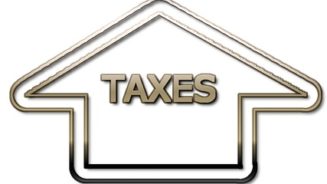New freedom of information data from HM Revenue and Customs, obtained by Quilter, the financial adviser and wealth manager, reveals that 3.1 million or one in five pensioners will be dragged into paying higher or additional rate tax by the 2027/28 tax year due to the government’s frozen income tax thresholds.
The analysis shows that 2.7 million people aged 60 and over will be brought into the higher rate of income tax in the tax years 2022-23 to 2027-28, while nearly half a million will be brought into the additional rate. More than a third – 1.3 million – are 70 or over.
ONS population estimates show there are 16.8 million people aged 60 and over living in the UK. This means the equivalent of almost an additional one in five are expected to be taxed at the higher or additional rate of tax due to the government’s frozen tax thresholds increasing tax by stealth.
Additionally, not everyone aged 60 and over will be paying income tax. Therefore, the proportion of those who do pay income tax and are pulled into the higher and additional rates is likely to be even greater.
Over 60s pulled into higher (HRT) or additional (ART) rate income tax brackets by threshold freezes in millions:
| |
2023-24 |
2024-25 |
2025-26 |
2026-27 |
2027-28 |
| Age |
HRT |
ART |
HRT |
ART |
HRT |
ART |
HRT |
ART |
HRT |
ART |
| 60 and over |
0.3 |
0 |
0.5 |
0.1 |
0.6 |
0.1 |
0.6 |
0.1 |
0.7 |
0.1 |
| Totals |
0.3 |
0.6 |
0.7 |
0.7 |
0.8 |
| 3.1 million |
Source: HMRC. Taxpayer counts are in millions and rounded to one decimal place.
The Chancellor has confirmed that tax increases are on the cards for October’s budget. Although given the Labour government has promised not to change income tax rates, making a decrease unlikely, more people will end up paying higher tax rates. Therefore, it is crucial for people to organise their finances now to retain as much of their income as possible.
Jon Greer, head of retirement policy at Quilter, said: “The number of pensioners likely to pay higher and additional rates of income tax as a result of frozen thresholds is set to increase exponentially by 2028, and not only will this boost government coffers by stealth, but it looks likely that other tax increases are on the cards. With the Labour government’s first Budget now just over two months away, it is vital that people are managing their finances tax efficiently to help reduce their overall burden.
“Those nearing retirement or semi-retired and still working should look to maximise their pension contributions whenever possible. Pension contributions can sometimes help you avoid tipping over into a higher income tax bracket. They are especially beneficial for higher rate taxpayers, as you can currently receive up to 40% tax relief on your contribution but will often only pay the basic rate of 20% when you withdraw the money in the future.
“Each tax year most people up to the age of 75 can earn tax relief on pension contributions they make up to 100% of their earnings with total tax relieved contributions limited by a £60,000 annual allowance. You can also carry forward any unused annual allowance from the previous three tax years. However, if you have already accessed your pension then you will be subject to the money purchase annual allowance (MPAA) limit of £10,000 per tax year. Pensions provide the most tax efficient way of saving for retirement, so it is important that people are aware of their annual allowance amount and that all who can afford to utilise it do so.
He further said: “For those who are already withdrawing from their pension, it is important to only take as much money as you need each tax year as the less you withdraw, the less income tax you will pay. Similarly, it is important to remember how much pension income you will have, including your state pension income as it is also taxable.
“If you have reached state pension age but do not wish to retire, you have the option to defer your state pension. If you reach state pension age on or after 6 April 2016 and opt to defer it, for every nine weeks you defer, your state pension will increase by 1%. While this can be a good option for those who are still working and do not yet require their state pension funds, it is important to remember that the additional amount is then paid with your regular state pension payment and could be subject to tax.”





